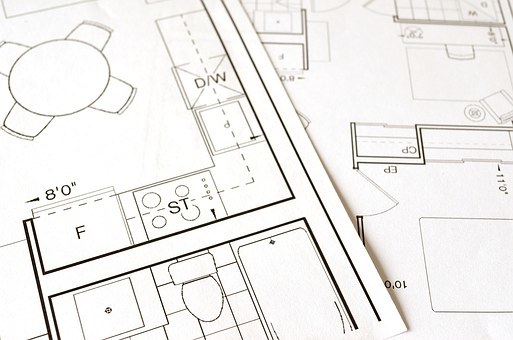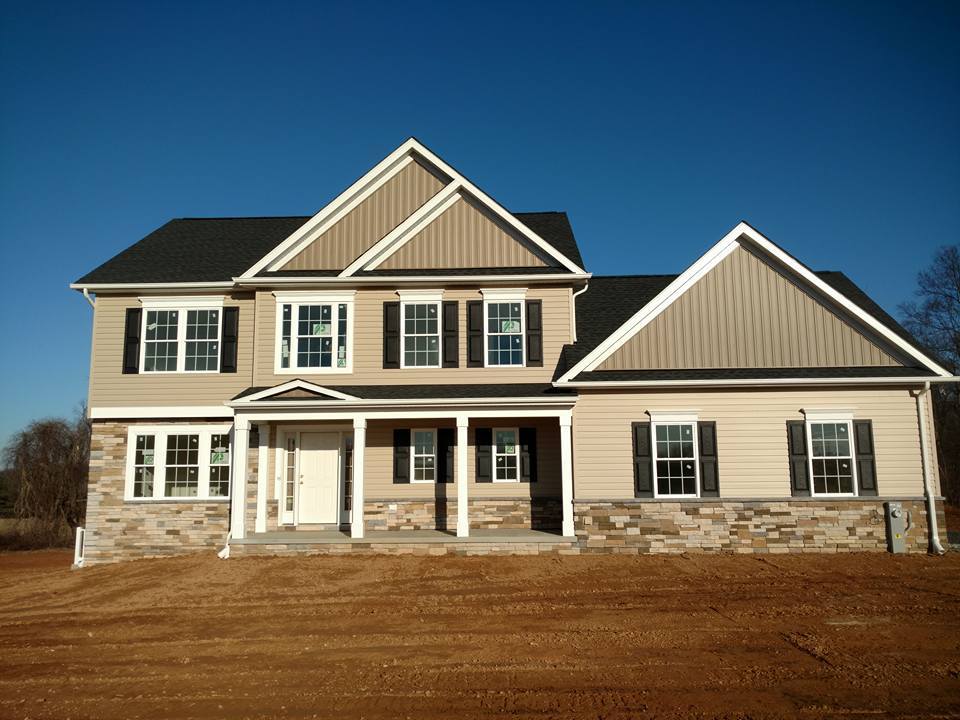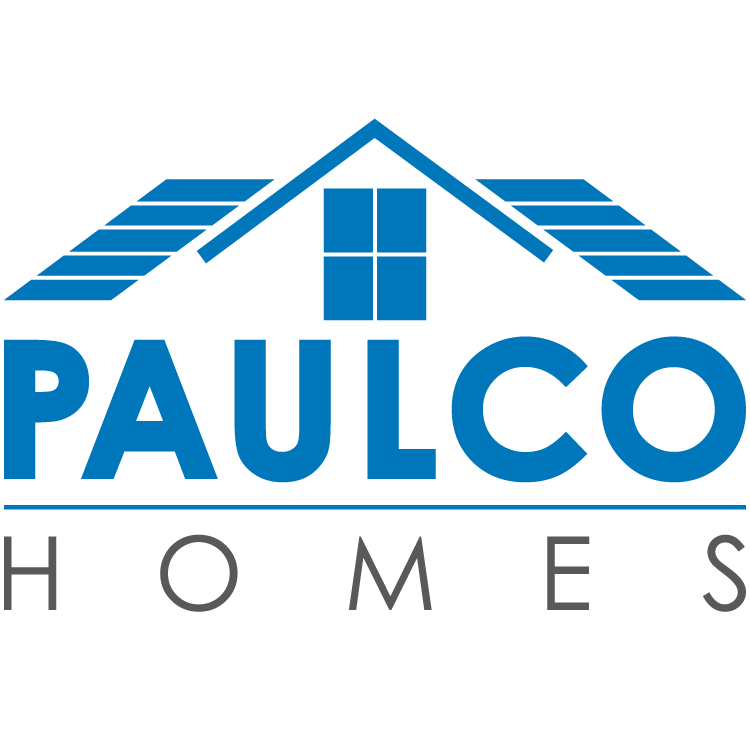
The builders at Paulco Homes present...
The Ultimate Guide to Home Building
Over 100+ tried and true tips, tools, and resources to help guide you through the home building process.

The builders at Paulco Homes present...
Over 100+ tried and true tips, tools, and resources to help guide you through the home building process.

That is the question on your mind if you are one of the many who are currently on the fence about buying an existing home or having one custom made for you. There are a few advantages that come with buying existing homes over custom homes. Particularly that the house is already built and move-in ready. However, pre-existing homes also have their own unique shortcomings:
• They aren’t usually built to suit all or even most of your particular tastes.
• There is a huge risk of buying a house, then finding out when it’s too late that it has a long list of repair and maintenance issues.
• Existing homes do not typically come under warranty like new builds do.
With these in mind, consider the following key benefits of choosing to build the home that is perfect for your family.
The biggest advantage of having your home custom built is that you have the ability to get exactly what you want. With pre-built or cookie cutter homes, it is often difficult if not impossible to get a home that suits your needs exactly. You may come very close, but even if you do, it usually requires hours of searching by you or your realtor. And even after all that searching, the potential for complete satisfaction is not very good.
Custom building your own home makes it easy to integrate unique features into the house during the planning and design phase. By doing a custom build, you can feel free to design your living room around a piece of heirloom furniture passed down through generations or integrate interesting building materials from an ancestral home, like a brick accent wall. The options are limitless.
Want an extra-large bedroom? An in-law "apartment" for your parents? An office that is only accessible from outside the house? A laundry room on the second floor? All of these options are easy to get if you choose to custom build your home.
Not having to worry about doing repairs, upgrades and reconfigurations along with shelling out the initial outlay to buy a pre-existing home means you could be saving money while getting the exact home you desire.
Custom building your home makes it possible for you to choose your own finishes, which lets you get the style you want at a price point that gives you maximum value for money.
When you buy a pre-existing house or a cookie cutter offering you have no control over the placement and design of the building in relation to the piece of land it sits on. Building a fully customized home lets you work with designers and architects to really take advantage of the positive features of the lot of land you want to build on.
Custom builds make the most of factors like sunlight and shade, air flow patterns,
trees and foliage and the size and orientation of the green space that surrounds the house.
If privacy is important to you, designing and building your own home means having the highest levels possible. With a custom design the orientation of the house is completely in your control as well as features such as lush trees, privacy fences and architectural features you
include specifically to enhance your property’s privacy.
Buying a pre-existing house or going with a build that includes elements of prefabrication can lead to not getting the quality you want. Completely customizing your home from the ground up dramatically reduces the chance of substandard construction. Working with trusted and experienced home builders, like Paulco Homes, guarantees your satisfaction at the end of the building project.

How can you choose the perfect neighborhood for your family?
If houses are like spouses, a neighborhood is like the extended family. But, while you can have a good marriage and still dread holidays with the in-laws, you'll never love a house if you don't like your neighborhood.
How can you choose the right community? Become a neighborhood detective. Figure out what you're looking for, do research and find a neighborhood that fits your description.
Step 1: Profile Your Ideal Neighborhood
Before you start scrutinizing neighborhoods, turn the magnifying glass back on
yourself. Think about what you're really looking for in a new neighborhood. Remember, you'll probably have to make compromises, so put the "must-haves" at the top and the "would- like-to-haves" at the bottom.
Here are some things to consider:
Do you have children or are you planning to have children anytime soon? Parents know that the first thing to do when looking at a neighborhood is to research the school system. Even if you're single, living in an area with a much sought-after school system raises your property value. If you have kids, you'll also want to live close to parks and community centers.
What type of home do you want? Are you interested in a single-family home or an apartment, townhouse or co-op? Read more about the different types of homes.
How far are you willing to commute? Do you plan to drive, walk or take mass transit to work? Do you have a car or would you be willing to get one?
Do you want to be in a historic neighborhood or a new development? Historic neighborhoods have tons of character, but often require lots of repair work and are governed by community associations with strict standards. Newer developments have more modern features, but are typically far from the city center. Read more about the different types of architecture styles.
What is your current community lacking? If you're currently landlocked, but have always wanted to live on the waterfront, put that at the top of your list. If you're a coffee junkie, having a Starbucks down the street may be a dream come true.
Do you want to be able to go places on foot? Would you like to be within walking distance of shops, restaurants and bars? Or would you be willing to drive to nearby businesses?
Think about what you don't want in a neighborhood, too. If you can't stand late-night noise, you'll probably want to steer clear of the college area or an area with a lively bar
scene.
Step 2: Zero In on the Area -
If you're moving within the same city, you may already know the various
neighborhoods. Choose the ones that best match your list of wants. If you're moving to a new city, you'll have to do more research. Start by picking a part of town to search in. For instance, if your job is on the west side of town, start there.
Step 3: Get the Suspects -
With your area of the city in mind, start digging up information. Find interesting neighborhoods online, ask local real estate agents for recommendations and compile all the background information you can, including:
School information: Look into the local public and private elementary, junior and high schools, as well as daycare programs.
Crime statistics: Most real estate sites have statistics that tell you how the zip code's crime rates measure up to the national average. If you want specifics, call the local police station.
Parks and recreation: How far is it to the closest park or recreation center?
Neighborhood associations: Does the community you're looking at have one, and, if so, are there lawn or construction restrictions? Is there a yearly fee?
Tourist attractions: Get a guidebook or check out the convention and tourism bureau's Web site to see all the city has to offer.
Step 4: Find the Clues -
Once you've done the background research, visit neighborhoods that made the preliminary grade in person. There's no better way to paint a real picture of life in the neighborhood. Use your senses to get a complete picture of the prospective community.
Remember your first impression. What do you notice first about the neighborhood? Do the streets have curb appeal? Are the houses well-maintained? Do the shops and
restaurants look hip and inviting? You'll want to feel good about where you call home, and impress buyers when you're ready to move on.
Visualize yourself in the neighborhood. Think of your daily routine. If you can't live without a morning latte, is there a coffee shop nearby? Where will you walk your dog or go jogging? You'll enjoy the neighborhood more if it's easy to do what you like.
Observe the neighborhood at different times of the day. Driving through will help you get a snapshot of life in the community -- good and bad. Do the roads turn into a
parking lot after school or during rush hour? Are people using grills or decks in the evening? Are neighbors and kids socializing or do people keep to themselves? Are the streets well-lit at night? These visual clues can help you decide if you'll fit in.
Talk to your future neighbors. Ask how they like the area, and get the dirt on anything they don't like about the place. What do they want to change? What's their favorite place to hang out? If they're rude to you, they probably wouldn't be good neighbors anyway.
Step 5: Close the Case -
You've chosen your neighborhood. Now for the hard part: finding a house you love. Luckily, you've narrowed it down to a few streets. Now, make sure to:
Draw up your vision of home. It worked for your neighborhood -- now think about what you want in a home. Write your own vision of home and stick to it.

There’s no way around it, hiring an architect can be an intimidating task. After all, you’re entrusting the design of your dream home to someone you’ve recently met.
To get started, ask family and friends for their recommendations. It’s also wise to consult websites such as the Better Business Bureau, Google, and Angie’s List and read reviews of those you’re considering hiring. Once you’ve narrowed down your list of candidates that you wish to interview, here are some helpful questions to help you find the perfect architect for your project.
1. What is your involvement during the construction process?
It’s crucial to have an architect that can work hand-in-hand with your builder for the duration of your project. This ensures that the builder is able to clear up any questions regarding the blueprints as the project progresses.
2. Are you personally designing my project?
It’s beneficial to understand whether the person you are initially meeting with is the person drawing up the blueprints or if they’re a representative of their firm. Insist on meeting the person responsible for your project before hiring an architect.
3. How are your rates calculated?
Architects use various methods to tabulate their rates. Some contractors charge price per square foot or a percentage of construction costs. Others opt to charge by the hour. It’s also important to understand how often you will be invoiced, as this can vary as well.
4. Can I have a list of references?
Verbal and written references allow you to understand the caliber of work an architect performs and how satisfied previous clients are with the final outcome.
5. Which past project was your favorite?
The response to this question can be quite telling if their favorite project had styling you didn’t particularly care for or if your relationship with them may not be as peaceful as you’d like. Additionally, if the architect favors a design style that differs from your personal taste, it’s wise to seek out a professional that will better execute your vision.
6. Do you foresee any obstacles to my vision being completed?
A reputable architect should be able to anticipate problems before they arise. They can verify whether your budget and timeline are realistic.

Selecting the right builder for your needs and for the type of new home you seek is one of the most important decisions you’ll make in the home building process.
Fortunately, there are some proven ways to speed up the research and selection process and to help ensure that you find a quality builder who’s a good match to construct your new home.
#1 Define Your Needs
While some builders construct a broad range of homes, many builders also specialize in a specific type of home, price range, or style. For example, not many build starter homes for first-time buyers and also multi-million dollar homes for affluent custom home buyers. The building materials, trade contractors and even the building process itself can differ greatly by type and price of home. Look for a good fit here.
#2 Experience Counts
Every home builder (including the most experienced and well-regarded companies today) once built their first home. And many new home building companies were started by experienced veterans of other builders. Don’t necessarily discount a new
firm, especially if their team includes seasoned pros, but do look for strong experience overall and in the type of home you seek. Professionalism and experience is tremendously important.
#3 Customer Testimonials
Many builders offer customer references and testimonials. If not, ask. And in either case, follow up. A few great questions to ask: Would you buy another home from this builder? Or recommend them to close friends or family? And don’t forget to ask for the key reasons why a past home buyer would or would not recommend a builder.
#4 Licensed & Insured?
Not every state or area requires builders to be licensed (Maryland does), but make sure that you work with a licensed builder in your area. Ask about the insurance that the builder and his/her subcontractors carry. Make sure that you are covered should any issues arise during the building process.
#5 Is There A Design Fit?
A builder whose entire portfolio consists of contemporary homes may not be the best fit for that highly traditional home you seek - and vice-versa. While many builders have expertise in a variety of design styles and architectural details, in general, look for a builder whose work includes at least some examples of the style of home you want.
#6 Warranty and Service
One of the top advantages of new construction is that your home itself and most of the products, systems and components it contains are brand-new and under warranty. The peace of mind that comes with knowing that major repairs or a new roof are likely years away is important. In addition, look for a structural warranty of ten years or longer on the home itself, ideally transferable to a new owner should you sell.
#7 Resale Value
Good reputations follow good builders, among homeowners and Realtors. Look for builders whose homes tend to hold or maintain their value.
#8 Industry Involvement
Not every good builder chooses to join their local Home Builder Association, so don’t place too much emphasis on this. However, such membership does tend to show that a builder is committed to the area for the long-term. It’s also a sign of commitment to new home community developers, building product suppliers and trade contractors that work in your city or town.
#9 Tour Model Homes
Once you’ve narrowed down a list of prospective builders using the criteria above, this is the most important step. Nothing substitutes for touring a home built by a builder on your short list. It can be a furnished and decorated model home that’s open to the public. Or, it can be a home the builder constructed for a past buyer that you visit by appointment. In either case, pay careful attention to the look, feel and quality of the home.
#10 Look For Signs Of Quality
Look for signs of quality construction and attention to detail when you visit the homes above. Also consider the building products that a builder uses. Are they brands with well-earned reputations for quality? What about the homes under construction you passed on the way to the completed model home? Were there signs of care and attention there, as well?

* Please note that all dates are approximate and there are many factors which can affect the timeline of your home build.
Week 1
Once this stage starts, you can pass the torch to the experts. Everything will be set in
stone as far as the look and construction of your home and that barren plot of land you’ve purchased will be prepped and ready to become the site of your new home.
Expect a lot of back hoes and heavy equipment to come with this stage. Workers will be busy clearing, excavating, and leveling the lot according to your architect’s plan. Then, they’ll outline the footprint of your home with stakes. It’ll be the first time that you’ll be able to see the rough shape of your home on your property.
Weeks 2-5
The “three Fs” stand for footings, foundation, and framing. You’ll hear your contractor talk about “pouring the footers” and that entails pouring concrete to support your home’s foundation. Once footers are in place and have passed inspection, the workers will pour the concrete slab of your foundation. Then, your home will have a stable structure for framing.
As the name implies, the floors, walls, and roof will be “framed” out with wood. You can think of this as the skeleton of your home. Once framing is complete, an inspector will come out again to verify that everything has been done to code. After that, exterior finishes like plywood and house wrap will be applied to seal off the inside from the outside.
This stage requires major structural work. Keep in mind that delays might happen if the weather is too wet for concrete to set or failed inspections lead to longer construction time.
Weeks 6-8
Now that your home has its basic structure, during this part of the home building process workers can begin filling it with the things that make it function and look like a home. Experts will install important mechanicals like heating and cooling units, plumbing lines, and electrical systems. Once that work is done, walls will begin to close up too with insulation and drywall.
Weeks 9-11
Up until this point, all you’ll see on your home building site is a lot of concrete, wood, insulation, drywall, and wires. This is the phase where your home will start to look more like one. Flooring will be going in, cabinets will be hung, and the pretty stuff like trim and mouldings will be installed during this period.
Most homeowners will be happy at this stage of the home building process since the site will finally look like the drawings your architect showed you months ago.
Week 12
Now is the time when sub-contractors will install faucets, countertops, light fixtures, plugs, and appliances.
Weeks 13-14
The last few weeks of your home building timeline will be a whirlwind of emotion and small details. You’ll be excited, but probably will want to know if it will all come together in time for closing.
The moment you’ve been waiting for, closing, will be the best! There are just a couple things you’ll need to do before you formally close and move in.
After your home is complete, do a “walk through” of the home. In addition to inspecting it and making a “punch list” of things you want the builder to correct, take note of its features and learn how to work add-ons like the home security network. Once you’re done with all of this, you can close, get the keys to your new home, and enjoy every last detail.
One more piece of advice: One of the best ways to stay on track with your home building timeline is to communicate your needs and wants clearly from the start.

Building a custom home gives you the opportunity to take everything into consideration when choosing a floor plan and tweak any open concept floor plan to meet your specific needs.
Communication
Establish open communication with the builder from the very beginning. Effective and regular communication is essential in the home building process. Your contractor should communicate with you regularly in regards to timelines, material purchasing, home issues, and any other information pertinent to the build.
Settlement
Be prepared for settlement. Ask your lender for the HUD pamphlet "Settlement Costs." Lenders are required to provide loan applicants with this pamphlet within 3 business days of the loan application. Lenders also must provide a good faith estimate of your settlement costs within 3 business days of your application. These costs generally run between 3 and 6 percent of the price of the house. Prepare for settlement costs ahead of time to keep your build moving forward.
Be Involved
Ask a lot of questions and take notes during scheduled walk-throughs. Make sure you understand how to operate the new features and appliances in your home. Be sure to get information regarding any active warranties and/or home permits.
Curb Appeal
Although you will most likely be spending more of your time indoors rather than outdoors; don't overlook the exterior of your home. Sprucing up your home's exterior is important to your home's curb appeal. And creates an inviting outdoor area for entertaining.
Once you're in your new home, make sure to take a home inventory. That way, if disaster strikes, you'll be able to report exactly what you lost to your homeowner's insurance provider. You may want take a videotape walk-through of your new home and possessions.
Consider a basic security system. Thanks to technology there are many in home security systems that can be operated via a smartphone app and cost less than $200. A home is one of the largest investments you'll ever make and it's worth protecting.
Part of owning a home is taking care of it. Start off on the right foot and stock up on your home maintenance supplies before you move in including tools, lawn supplies, etc. Things do break and accidents do happen, so you will be glad you have these items when you need them.
Make sure all changes to the building contract are in writing and additional costs are determined. Your contractor should submit change orders for your approval prior to work being completed.
Have fun! It's a well-known fact that folks who build a house feel a stronger
emotional attachment to their homes and tend to settle down for a much longer period of time. This is most likely because they played such a critical part in its design, planning, and construction.

We are so glad that you have taken the time to review this guide on home building! Paulco Homes has been building custom homes in Maryland since 1985. Since the inception of our business, we’ve maintained a clear focus to build better quality homes, at a reasonable price, and provide complete customer satisfaction throughout the entire process.
We can help you with your next home building or renovation project!